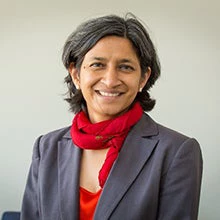 Hombolo Bwawani primary school, a village near Dodoma, Tanzania. Copyright: Arne Hoel / World Bank
Hombolo Bwawani primary school, a village near Dodoma, Tanzania. Copyright: Arne Hoel / World Bank
It is a shocking fact that around 70 percent of 10-year-olds in low- and middle-income countries can’t read and understand a simple text. With reading essential for all learning, a child who can’t read by age 10 risks being left behind for good, even if they are enrolled in school.
What’s even more shocking is that, broadly speaking, there is not enough urgent action across countries to address the crisis in foundational learning. Misplaced optimism and faulty beliefs on the part of policymakers, teachers and parents are partly to blame. Low and inefficient spending and a lack of political will to drive change are another challenge.
Policymakers, for their part, tend to overestimate the state of affairs. A 2020 survey of senior education officials from 35 developing countries estimated that 47 percent of 10-year-olds in their country could read with comprehension, compared with assessment data showing the number was only 23 percent.
Teachers also tend to over-estimate the skills of lagging students and often assume students will “catch-up” by themselves. Parents are equally optimistic. In East Africa, one study found that more than half the children did not pass basic literacy or numeracy tests, yet most parents were satisfied with the performance of the education system. This finding is repeated elsewhere.
The belief that not all children can learn hinders action too. Data from 20,000 teachers across nine developing countries shows that nearly 43 percent of teachers believe that “there is little they can do to help a student learn” if the parents are uneducated. This belief is unfair and untrue.
And finally, spending per child in low-income countries is either inadequate (around $50-$80 per child on average) or, when not inadequate, is not allocated effectively to improve learning.
We can’t let these challenges get in the way of solving the learning crisis. It is not right—socially, economically, or ethically—to leave 70 percent of children behind. The students who are lagging can be taught — through the system, and at scale. Learning poverty can be eradicated. It just needs different approaches. The recent report “Cost Effective Approaches to Improve Global Learning” by the Global Education Evidence Advisory Panel (GEEAP) shines a bright light on what works—and how.
One approach— highlighted in the report and pioneered by the Indian NGO Pratham—is Teaching-at-the-Right Level or the “TaRL” method. Children are grouped by their current learning level, rather than by their current grade. Appropriate instruction for each of the groups is carried out so children acquire basic literacy and numeracy skills and move into higher groups in a short period of time. As a catch-up intervention, this approach works best with children who are 7 or older and can be delivered in schools or outside school in camps run by teachers, teachers’ aides or even volunteers.
The TaRL method has proven both effective and economical, delivering the equivalent of more than three years of high-quality schooling per US$100 spent. Data from TaRL implementation with state governments in India and country governments in Africa consistently shows at least 20-25 percentage point improvements in each round of implementation.
Implemented well, teaching at the right level helps children acquire foundational literacy and numeracy skills and makes future years of schooling more productive. It has been rigorously tested at large scale in India and Ghana and implemented at scale in Cote d’Ivoire and Zambia. In 2021 Chile launched Escuelas Arriba, a national program which includes a catch-up phase for each learning objective. Another approach to catching students up is adaptive learning, which uses devices with specialized software to target lessons to each student’s learning level.
There are other scalable solutions highlighted in the report. Structured pedagogy interventions have proven effective at scale across multiple countries, especially in improving foundational literacy and numeracy. Kenya’s Tusome and Papua New Guinea’s Reader Booster Program, for example, found large effects on learning. Implemented at scale these approaches can build strong foundations in the early school years and help reduce the number of children who fall behind and need catch-up interventions later. Within a school system, catch-up interventions such as TaRL help older children move towards grade level learning while structured pedagogy can enable strong foundations to be built in early grades.
Communities can also play an important role in galvanizing change. In Tamil Nadu, India the Illam Thedi Kalvi program relied upon 200,000 uncredentialed community volunteers to run daily 60-90 minute after-school remedial programs for 3.3 million primary-school age children whose learning had suffered due to COVID-19 school closures. Two-thirds of the learning deficit was made up within six months of schools reopening.
Working with state governments and others Pratham led a similarly large volunteer effort this past summer in three of India’s largest states, Bihar, Uttar Pradesh and Madhya Pradesh. Three-hundred thousand high school and college aged volunteers worked with 3.5 million children for one to two hours a day during a month-long summer camp. This resulted in more than 20 percentage point improvement in the ability of children to at least read a simple Grade 2 level text or story.
And when it comes to prioritization of learning: where there’s a will, there’s a way. Brazil’s Sobral municipality is a case in point. In 1997 the newly elected mayor of Sobral began a process of education reform that took Sobral from being among the worst performing municipalities to the country’s best. The reforms involved difficult political decisions with a single-minded focus on improving student learning. Sobral’s reforms have now scaled to the rest of Brazil.
In summary, hope is not lost. We can turn the learning crisis around, with quick, cost-effective and scalable solutions that have already been shown to work to address gaps in foundational learning. With clear and achievable goals and the political leadership to support those goals change is possible. Government, communities, parents and teachers all have a critical and active role to play.
And we know it can be done. It took the combined effort of governments, families and communities to achieve the massive increases in school enrollment rates that, with few exceptions, are now universal. The next step is to ensure that every child in school is learning. We have seven more years to achieve the Sustainable Development Goals for Education. The time is now secure it. For this generation, and for the world.



Join the Conversation